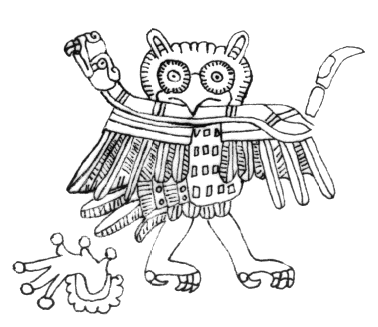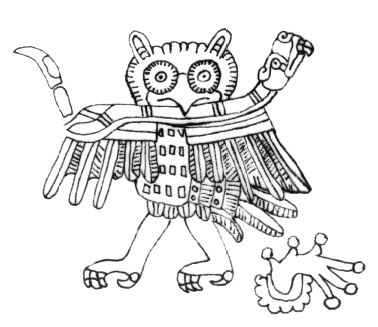フレデリック・バース
Frederik
Barth, 1928-2016

フレデリック・バース
Frederik
Barth, 1928-2016

| Thomas Fredrik
Weybye Barth (22 December 1928 – 24 January 2016) was a Norwegian
social anthropologist who published several ethnographic books with a
clear formalist view. He was a professor in the Department of
Anthropology at Boston University, and previously held professorships
at the University of Oslo, the University of Bergen (where he founded
the Department of Social Anthropology), Emory University and Harvard
University. He was appointed a government scholar in 1985.[1][2][3] |
Thomas Fredrik Weybye
Barth、1928年12月22日 -
2016年1月24日)は、ノルウェーの社会人類学者で、明確な形式主義的見解を持つ民族誌の書籍を複数出版している人物である。ボストン大学人類学科教
授を経て、オスロ大学、ベルゲン大学(社会人類学科を創設)、エモリー大学、ハーバード大学で教授職を歴任した。1985年に政府の高級研究職に任命され
た[1][2][3]。 |
| Barth was born in Leipzig,
Germany to Thomas Barth, a professor of geology, and his wife Randi
Thomassen. They also had a daughter. Barth and his sister grew up in
Norway in an academic family. Their uncle was Edvard Kaurin Barth, a
professor of zoology.[1] Fredrik Barth developed an interest in
evolution and human origins. When his father was invited to give a
lecture at the University of Chicago, the younger man accompanied him
and decided to attend the university, enrolling in 1946.[4] He earned
an MA in paleoanthropology and archaeology in 1949.[5] After receiving his MA, Barth returned to Norway, keeping a connection to Chicago faculty. In 1951 he joined an archaeological expedition to Iraq led by Robert Braidwood. Barth stayed on after the expedition was over, and conducted ethnographic population studies with the Kurdish population. He spent a year at the London School of Economics (LSE) writing up this data, and in 1953 published his first book, Principles of Social Organization in Southern Kurdistan.[4]: 2–3 Barth had originally planned to submit the manuscript of his Principles of Social Organization as his Ph.D. dissertation, but was unsuccessful in doing so. He continued graduate study, moving to Cambridge, England to study with Edmund Leach, whom he had previously worked with at the LSE. For his PhD, Barth conducted fieldwork in Swat, Pakistan; his completed dissertation was published in 1959 as Political Leadership among Swat Pathan. Shortly afterwards he was part of a UNESCO study of pastoral nomadism, which focused on the Basseri in what is now Iran. From this work, he published the 1961 monograph Nomads of South Persia.[4] : 3–6 In 1961, Barth was invited to the University of Bergen to create an anthropology department and serve as the chair. This important and prestigious position gave him the opportunity to introduce British-style social anthropology to Norway. The only other existing anthropology program, at the University of Oslo, was older and connected to the university's ethnographic museum (now the Museum of Cultural History). It was based in Victorian folklore and museum approaches. By founding the department at Bergen, Barth hoped to create a modern, world-class department with an approach similar to those found in England and the United States.[4]: 7 |
バースは、ドイツのライプチヒで、地質学の教授であったトーマス・バー
スと、妻のランディ・トマセンの間に生まれた。二人には娘もいた。バースとその妹は、ノルウェーの学者一家に育つ。叔父は動物学の教授であるエドヴァル
ド・カウリン・バースである[1]。1949年に古人類学と考古学の修士号を取得した[5]。 修士号取得後、バースはシカゴの教員とのつながりを保ちつつノルウェーに帰国した。1951年、ロバート・ブレイドウッド率いるイラクへの考古学探検隊に 参加する。探検隊終了後も残り、クルド人の民俗学的な人口調査を行った。彼はロンドン・スクール・オブ・エコノミクス(LSE)で1年間このデータを書き 上げ、1953年に最初の著書『南クルディスタンにおける社会組織の原理』[4]: 2-3 を出版した。 バースは当初、『社会組織の原理』の原稿を博士論文として提出する予定であったが、それはかなわなかった。その後、大学院での研究を続け、イギリスのケン ブリッジに移り、LSEで一緒に研究していたエドマンド・リーチに師事する。博士課程では、パキスタンのスワートでフィールドワークを行い、完成した論文 は1959年に『スワート・パータンにおける政治的リーダーシップ』として出版された。その後まもなく、現在のイランに住むバセリ族に焦点を当てたユネス コの牧畜遊牧民の研究に参加した。この研究から、彼は1961年に単行本『南ペルシアの遊牧民』を出版した[4]:3-6。 1961年、バースはベルゲン大学に招かれ、人類学の学部を創設し、その学部長を務めることになった。この重要かつ名誉ある地位は、彼にイギリス式の社会 人類学をノルウェーに導入する機会を与えた。オスロ大学に唯一存在した人類学プログラムは、大学の民族誌博物館(現在の文化歴史博物館)と連携している古 いものでした。このプログラムは、ヴィクトリア朝の民俗学と博物館のアプローチに基づいていました。ベルゲンに学科を設立することで、バルトは、イギリス やアメリカに見られるようなアプローチを持つ、近代的で世界的な学科を作ることを望んだのである[4]: 7。 |
| Barth remained at Bergen from
1961 to 1972. During this time his own work developed in two key ways.
First, he developed research projects inside Norway (and published a
study entitled The Role of the Entrepreneur in Social Change in
Northern Norway in 1963). Second, he began writing more purely
theoretical works that secured his international reputation within
anthropology. These included Models of Social Organization (1966) and
especially the small, edited volume, Ethnic Groups and Boundaries: The
Social Organization of Cultural Difference (1969). Barth's introduction
to Ethnic Groups and Boundaries became his most well-known essay and
"ended up among the top 100 on the social science citation index for a
number of years.".[4]: 10 In 1974 Barth moved to Oslo, where he became professor of social anthropology and the head of the city's Museum of Cultural History. During this period, anthropology was changing. Marxism and interpretive approaches were becoming more central, while Barth's focus on strategy and choice was being taken up by economics and related disciplines.[4]: 9 Barth shifted to studying meaning and ritual as developed in ethnic groups, and conducted research in Papua New Guinea, where he conducted fieldwork with the Baktaman. He published several works from these studies, namely the Ritual and Knowledge among the Baktaman of New Guinea (1975). He also continued studies in the Middle East, conducting fieldwork in Oman with his wife Unni Wikan. This resulted in his 1983 volume Sohar: Culture and Society in an Omani Town. Barth received a state scholarship from the Norwegian government in 1985. He left the country to accept two positions in the United States—at Emory University from 1989 to 1996, and Boston University from 1997 to 2008.[6]: 7 By this time, Barth and his wife "felt we had both done our share of physically strenuous fieldwork" and decided to begin an ethnographic project in Bali.[4]: 14 He developed an interest in the anthropology of knowledge at around this time, an interest which he explored in his book Balinese Worlds (1993). More recently, he has also conducted research in Bhutan. Barth was a member of the Norwegian Academy of Science and Letters.[7] In 1997 he was elected a Foreign Honorary Member of the American Academy of Arts and Sciences.[8] |
バースは1961年から1972年までベルゲンに留まった。この間、彼
自身の研究は、2つの重要な方法で発展した。第一に、ノルウェー国内で研究プロジェクトを展開したことである(1963年には『The Role of
the Entrepreneur in Social Change in Northern
Norway』という研究書を出版しました)。第二に、人類学において国際的な名声を確保するため、より純粋に理論的な著作を書き始めた。その中には、
『社会組織のモデル』(1966年)や、特に小規模の編集本『エスニック・グループと境界線』(Ethnic Groups and
Boundaries)が含まれる。1969年)である。バースの『エスニック・グループと境界』の序文は彼の最も有名なエッセイとなり、「何年にもわ
たって社会科学の引用指数のトップ100に入ることになった」[4]。 10 1974年、バースはオスロに移り住み、社会人類学の教授となり、オスロの文化歴史博物館の館長に就任した。この時期、人類学は変化していた。マルクス主 義や解釈的アプローチが中心となっており、バルトの戦略や選択への関心は経済学や関連学問に取り込まれていた[4]: 9 バルトは、民族集団で展開される意味や儀式の研究にシフトし、パプアニューギニアでバクタマンとのフィールドワークを行いながら、研究を進めた。これらの 研究から、『ニューギニアのバクタマンにおける儀礼と知識』(1975)という著作を発表した。また、中東でも研究を続け、妻のウンニ・ウィカンとともに オマーンでフィールドワークを行った。その結果、1983年に『ソハール』を出版した。Culture and Society in an Omani Town)を出版した。 1985年、ノルウェー政府から国費留学生として招かれる。1989年から1996年までエモリー大学で、1997年から2008年までボストン大学で、 それぞれ職を得るために国を離れた[6]: 7 この頃、バルトと彼の妻は「肉体的にきついフィールドワークはやりつくしたと感じ」、バリでの民族誌プロジェクトを開始することにした[4]: 。 14 この頃、彼は知識の人類学に興味を持ち始め、その興味は著書『バリの世界』(1993年)で探求されている。最近では、ブータンでの調査も行っている。 1997年にアメリカ芸術科学アカデミーの外国人名誉会員に選出された[8]。 |
| Barth was married 1949–1972 to
Mary ("Molly") Allee (27 April 1926 – December 1998),[9] and he was
married again 30 January 1974 to Unni Wikan, professor of social
anthropology at the University of Oslo, Norway.[6]: 7 His sister Tone
Barth (25 January 1924 – 10 October 1980) was married 1945–1963 to
Terkel Rosenqvist (1921–2011), also an academic,[10] and she was
married again in 1963 to the Norwegian politician for the Conservative
Party Vidkunn Hveding (1921–2001). Barth died in Norway on 24 January
2016 at the age of 87.[11] |
バースは1949年から1972年にかけてメアリー(「モリー」)・ア
リー(1926年4月27日 -
1998年12月)と結婚し、1974年1月30日にノルウェーのオスロ大学社会人類学教授のウニ・ウィカンと再婚している[9][10]。 [6]:
7 妹のトーン・バース(1924年1月25日 -
1980年10月10日)は、1945年から1963年にかけて、同じく学者のテルケル・ローゼンクヴィスト(1921-2011)と結婚し、1963年
に保守党のノルウェー人政治家ヴィドクン・フベディング(1921-2001)と再婚している[10]。バースは2016年1月24日にノルウェーで87
歳で死去した[11]。 |
| He was well known among
anthropologists for his Transactionalism analysis of political
processes in the Swat Valley of northern Pakistan, and his study of
micro-economic processes and entrepreneurship in the area of Darfur in
Sudan. The latter has been regarded as a classical example of formalist
analysis in economic anthropology. During his long career, Barth has
also published acclaimed studies based on field works in Bali, New
Guinea, and several countries in the Middle East, thematically covering
a wide array of subjects.[2] |
パキスタン北部のスワット渓谷における政治過程の取引主義的分析、およ
びスーダンのダルフール地域におけるミクロ経済過程と起業家精神の研究で人類学者の間でよく知られている。後者は、経済人類学における形式主義的分析の古
典的な例とみなされている。 |
| During his long career, Barth
has also published acclaimed studies based on field works in Bali, New
Guinea, and several countries in the Middle East, thematically covering
a wide array of subjects. |
バースの長いキャリアのなかで、彼はまた、バリ島、ニューギニア、中東
諸国でのフィールドワークをおこない、それをもとに、幅広いテーマで研究を行い、高い評価を得ている。 |
| Ethnicity Barth has been an influential scholar on the subject of ethnicity. Andreas Wimmer wrote in 2008, "The comparative study of ethnicity rests firmly on the ground established by Fredrik Barth in his well-known [1969] introduction to a collection of ethnographic case studies."[12] As the editor of Ethnic Groups and Boundaries (1969), Barth outlined an approach to the study of ethnicity that focused on the ongoing negotiations of boundaries between groups of people. Barth's view was that such groups were not discontinuous cultural isolates, or logical a prioris to which people naturally belong. Barth parted with anthropological notions of cultures as bounded entities, and ethnicity as primordial bonds. He focused on the interface and interaction between groups that gave rise to identities.[2] Ethnic Groups and Boundaries, which he edited, concentrates on the interconnections of ethnic identities. Barth writes in his introduction (p. 9): ... categorical ethnic distinctions do not depend on an absence of mobility, contact and information, but do entail social processes of exclusion and incorporation whereby discrete categories are maintained despite changing participation and membership in the course of individual life histories. He emphasizes the use by groups of categories - i.e. ethnic labels - that usually endure even when individual members move across boundaries or share an identity with people in more than one group. The inter-dependency of ethnic groups is a pivotal argument throughout both the introduction and the following chapters. As interdependent, ethnic identities are the product of continuous so-called ascription (Cf. Ascriptive inequality) and self-ascription, Barth stresses the interactional perspective of social anthropology on the level of the persons involved instead of on a socio-structural level. Ethnic identity becomes and is maintained through relational processes of inclusion and exclusion.[2] |
エスニシティ バースはエスニシティというテーマで影響力のある研究者である。アンドレアス・ヴィマーは2008年に「エスニシティの比較研究は、フレドリック・バース がよく知られた[1969]民族誌的事例研究集への導入で確立した基盤にしっかりと乗っている」と書いている[12]。バースは『民族集団と境界』 (1969)の編集者として、人々の集団間の境界の進行中の交渉に焦点を当てたエスニシティ研究へのアプローチの概要を述べている。バースの見解は、その ような集団は非連続的な文化的孤立でもなければ、人々が自然に所属する論理的先験性でもないというものであった。 バースは、文化は境界のある実体であり、民族は原初的な結合であるという人類学的な概念と決別した。彼はアイデンティティを生み出す集団間のインター フェースと相互作用に焦点を当てたのである[2]。 彼が編集した『エスニック・グループと境界』はエスニック・アイデンティティの相互接続に焦点を合わせている。バースは序文でこう書いている(p.9)。 しかし、それは排除と取り込みの社会的プロセスを伴うものであり、それによって、個人の生活史の過程で参加やメンバーシップが変化しても、個別のカテゴ リーが維持される。 彼は、個々のメンバーが境界を越えて移動したり、複数のグループの人々とアイデンティティを共有したりしても、通常、持続するカテゴリー、すなわち民族の ラベルをグループが使用することを強調している。 エスニック・グループの相互依存は、序章と続く章を通じて極めて重要な論点である。相互依存的な民族のアイデンティティは、いわゆるアスクリプション (Cf. Ascriptive inequality)と自己アスクリプションの連続的な産物であるため、バースは社会構造的なレベルではなく、関係者のレベルにおいて社会人類学の相互 作用的視点を強調する。民族的アイデンティティは包摂と排除の関係的な過程を通してなり、維持される[2]。 |
| Selected bibliography Balinese worlds. Chicago: University of Chicago Press, 1993. ISBN 0-226-03833-5 Cosmologies in the making : a generative approach to cultural variation in inner New Guinea. Cambridge: Cambridge University Press, 1987. ISBN 0-521-34279-1 Sohar, culture and society in an Omani town. Baltimore: Johns Hopkins University Press, 1983. ISBN 0-8018-2840-6 Ritual and knowledge among the Baktaman of New Guinea. Oslo: Universitetsforlaget, 1975. ISBN 0-300-01816-9 Ethnic groups and boundaries. The social organization of culture difference. Oslo: Universitetsforlaget, 1969. ISBN 978-0-04-572019-4 (Reissued Long Grove, IL: Waveland Press, 1998) Models of social organization. London, Royal Anthropological Institute, 1966. Nomads of South-Persia; the Basseri tribe of the Khamseh Confederacy. Oslo: Universitetsforlaget, 1962. Political leadership among Swat Pathans. London : The Athlone Press, 1959. |
|
| https://en.wikipedia.org/wiki/Fredrik_Barth |
https://www.deepl.com/ja/translator |
Frederik Barth が1969年に編集した『民族諸集団と諸境界:文化的差異の社会組織』"Ethnic Groups and Boundaries: The social organization of cultural differences." Bostton: Little Brown, 1969. の冒頭のイントロダクションは、民族集団というものの生成が、他の民族集団——つまり集合的な「他者」——との差異とそれにもとづく境界——もちろん認識 論的な境界だが——の構築をもとにできあがるという理論的枠組みを指摘した比較的長文の論文である。これは今日「民族境界論」ないしは「エスニック・バウンダリー論(ethnic boundary theory)」と 言われる。
リンク
文献
Do not copy and paste, but you might [re]think this message for all undergraduate students!!!

